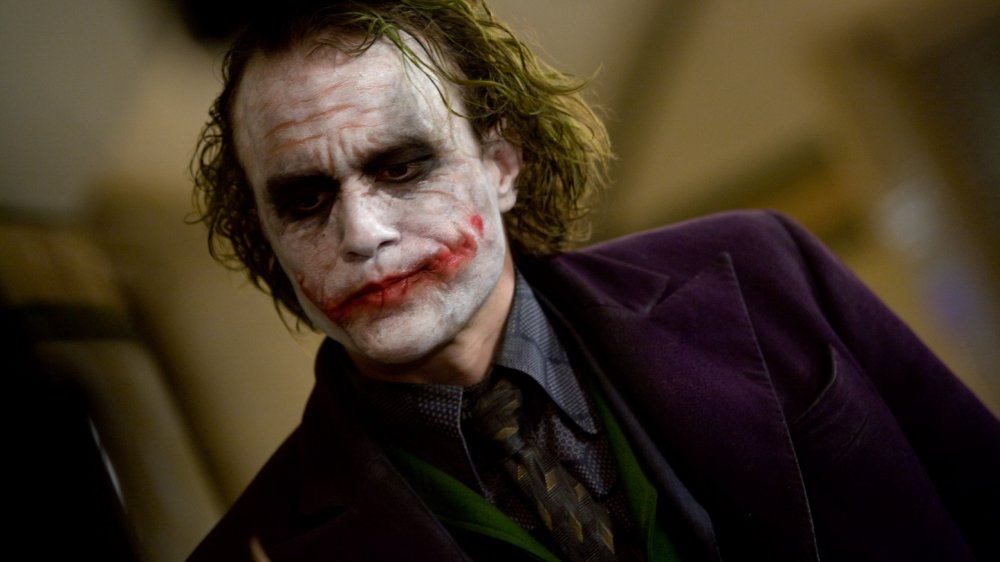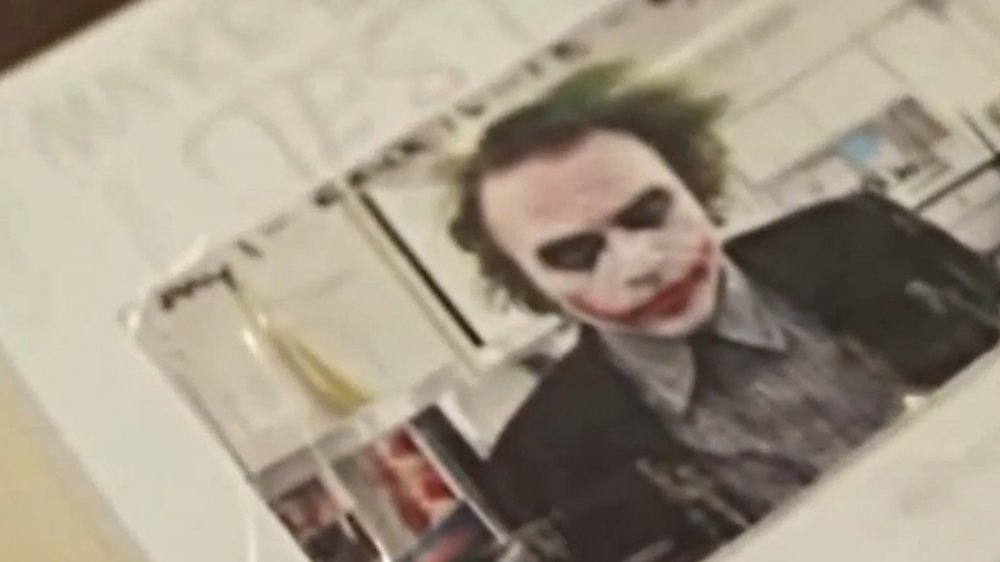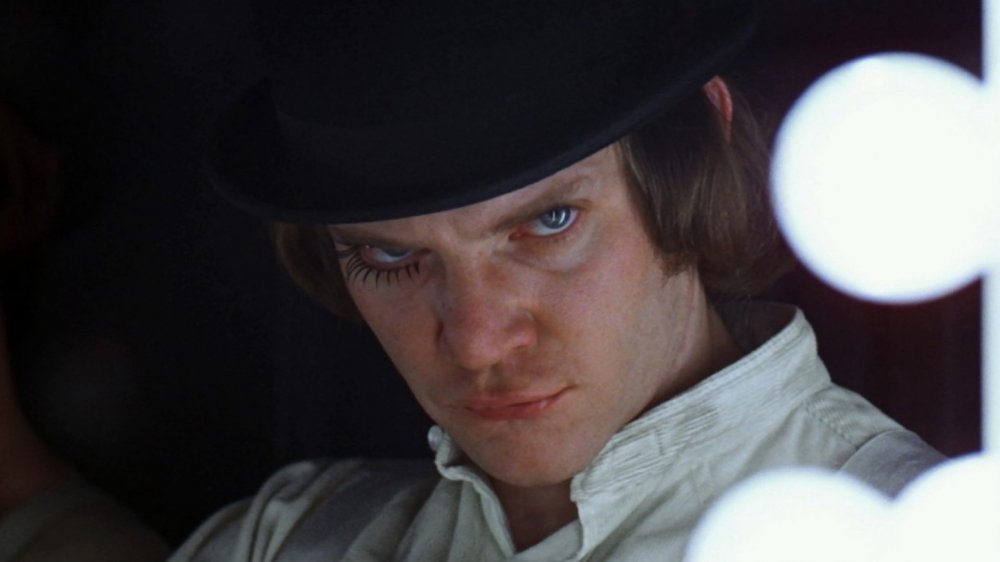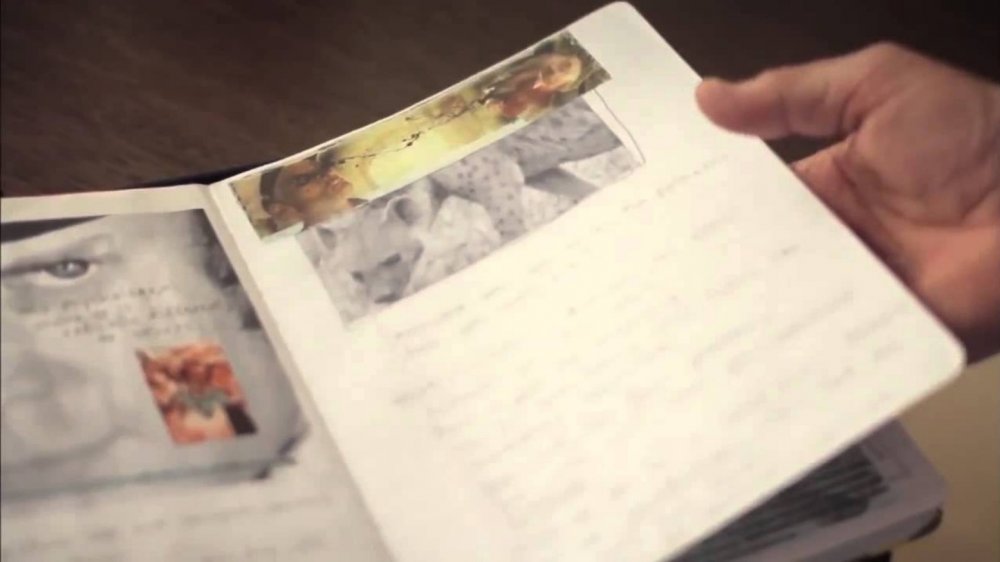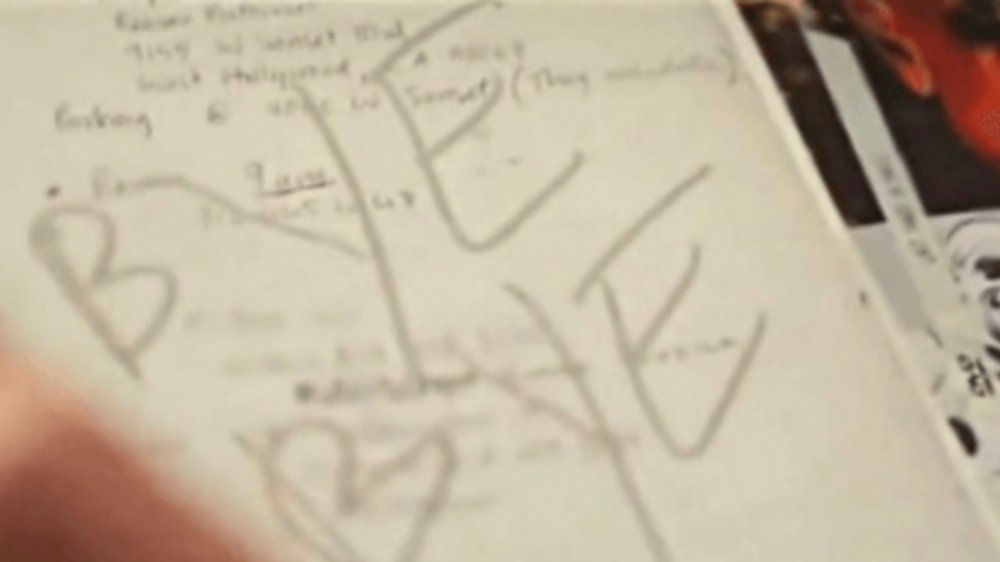The Truth About Heath Ledger's Disturbing Joker Diary
Over a decade after it first appeared on the big screen, Heath Ledger's rendition of the Joker in 2008's The Dark Knight stands above all other supervillain portrayals. He came across as cold, thoughtful, and scarily real, bringing the Clown Prince of Crime to life in a new and impactful way. Pulling off such a chilling performance didn't come easy, and was the result of impressive dedication on the part of the man behind the makeup.
Heath Ledger took his acting work incredibly seriously and didn't shy away from an opportunity to push himself as an artist. He'd envelop himself in his characters to ensure he got every mannerism, line, and facial expression just right, no matter the nature of the project. Christopher Nolan's vision of Joker was no exception, and as it turns out, Ledger took his methodology to the next level for the part with a disturbing diary.
While much of the diary's content – playing cards, comic panels, and various quotes from The Dark Knight – centers on the Joker, it also contains many extra images and writings that give fans a glimpse into Ledger's mind as he delved deeper down the rabbit hole. The small book has become almost as legendary as the character itself, leading fans and critics to praise Ledger for his unsettling commitment to his craft. Because of the foreboding nature of its content, however, it comes with its fair share of urban legends.
Here is the interesting, yet uncomfortable, truth about Heath Ledger's Joker diary.
Heath Ledger's diary and self-imposed isolation were vital to his preparation
To truly become the Joker, Heath Ledger chose to isolate himself from the rest of the world for months at a time, locking himself in his apartment or hotel room to iron out the finer details of the character. During his exile, he'd work on his diary free of distraction, documenting his thought process, important quirks to the character, and other notes that describe how he came up with so many now-iconic parts of the Joker's characterization.
In a German documentary about the late actor, titled Too Young to Die: Heath Ledger, his father, Kim Ledger, was interviewed on the unorthodox nature of his son's preparation. While the elder Ledger admitted that the isolation and prolonged study was nothing new for his son, he described the Joker journal as being on "a whole new level." Even as bizarre as its content seemed on its own, the two strategies Ledger utilized in tandem with were undeniably crucial to perfecting his performance.
The diary is full of clippings from comic books, which Ledger read in isolation. Pages of the diary are filled up with handwritten copies of the Joker's dialogue from his scenes, including the infamous moment when the Joker detonates a bomb in a Gotham City hospital. In the documentary, Kim mentions that when they were kids, Ledger's older sister Kate would dress him in a nurse's uniform, like he wears in the movie.
Heath Ledger thought of the character as a cold-blooded, mass-murdering clown
When Ledger described his version of the character to Empire in 2007, he said "I ended up landing more in the realm of a psychopath. Someone with very little to no conscience towards his acts. He's just an absolute sociopath, a cold-blooded, mass-murdering clown.
Ledger also told Empire about Christopher Nolan's input on the character. "Chris has given me free rein," Ledger said. "Which is fun, because there are no real boundaries to what The Joker would say or do. Nothing intimidates him, and everything is a big joke." Ledger channeled this freedom while writing his diary, which is filled with words and phrases like "chaos" and "kill the Batman."
On set, Ledger often improvised moments during scenes, and Ledger rarely told Christopher Nolan exactly what he was planning to do — and the unpredictability made directing his scenes much more intense than usual. One of the most memorable moments in the film that Ledger improvised takes place during the scene when Jim Gordon (Gary Oldman) gets promoted to police commissioner shortly after capturing the Joker. The Joker, in a nearby prison cell, sarcastically claps along with everyone else (via CheatSheet).
A Clockwork Orange inspired Ledger's Joker incarnation
Among the many seemingly random images and frantic scribblings inside Ledger's diary were a handful of references to Stanley Kubrick's 1971 classic A Clockwork Orange — more specifically, a few images of fictional psychopath Alex DeLarge. The main character of the piece, he's best described as a sadistic teenager who commits heinous crimes and terrorizes anyone and everyone he encounters simply for the fun of it. Is that description ringing any bells?
Malcolm McDowell brings the villainous DeLarge to life in a performance that greatly influenced Ledger's approach to the Joker. The character in Kubrick's film was insane and clearly had no sympathy for others, and the man behind it all conveyed that perfectly. Techniques such as the bone-chilling "Kubrick Stare" and his monotone, yet assertive dialogue delivery played perfectly into Ledger's Dark Knight performance, which, in hindsight, bordered on homage to McDowell.
Ledger looked to hyenas to perfect his Joker laugh
One of the most important things to get right when developing a new Joker adaptation is the character's laugh. Every actor that has stepped into that role put a different spin on it that fit that specific incarnation perfectly. Ledger knew he couldn't simply copy Mark Hamill or Jack Nicholson, as that would cheapen the character, so he had to do some digging and create his own laugh from scratch. As his diary detailed, he found his muse in the form of a hyena.
The hyena is synonymous with its "laugh," a call the species uses to express any number of emotions. The sound is generally high-pitched and comes out as a threatening cackle that's perfect for the Clown Prince of Crime. In Ledger's journal, there was at least one picture of a laughing hyena included, most likely citing his interest in using their "laugh" as a starting point for his own. Looking back on his performance, the similarities between the two vocal expressions are rather striking.
Did the Joker diary leave behind hints to Heath Ledger's death?
On January 22, 2008, Heath Ledger tragically passed away at the young age of 29 due to cardiac arrest. According to the medical examiner, his passing came as a result of an overdose of prescription medication that brought on a heart attack — a detail with which many news outlets and the rumor mill ran. It was no secret that Ledger went to serious extremes to slip into character, but did it contribute to his untimely death? After all, the last entry did say "BYE BYE." So, was there any validity to the claims that Joker pushed Ledger over the edge?
Simply put, despite his journal's cryptic nature and his devotion to the Joker role, Ledger's death wasn't a direct cause of his preparation. His drug abuse issues weren't a new phenomenon, and his debut in the DC universe wasn't driving him into any kind of depression. His sister, Kate Ledger, set the record straight on her brother's attitude toward the role, telling reporters at the 2017 Tribeca Film Festival that "He wasn't depressed about the Joker!" His Joker diary was very concerning out of context, but it turned out to be nothing more than a tool by which Ledger was able to pull off the performance of a lifetime.
